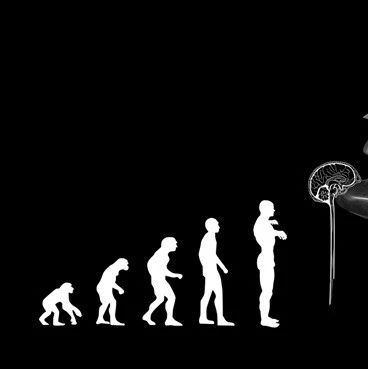导读:还记得视蜂蜜如命的小熊维尼吗?没错,在现实生活中,熊是真的很喜欢吃蜂蜜,也为了吃蜂蜜而常在半夜侵袭蜂窝,盗取蜂蜜。而这与它自身的味觉感受器基因是密不可分的。

视蜂蜜如命的小熊维尼
猫咪通常都会选择“无视”你的甜食款待,但是它们却会把握任何可能的吃肉的机会。这种行为源于它们的舌头缺少甜味感受器。现在,研究人员发现它们的一些野生食肉的“远房亲戚”,包括海狮、鬣狗,也缺乏甜味感受器。
其他食肉动物(如熊)的味蕾则保持了甜味感受器。还记得视蜂蜜如命的小熊维尼吗?没错,在现实生活中,熊是真的很喜欢吃蜂蜜,也为了吃蜂蜜而常在半夜侵袭蜂窝,盗取蜂蜜。不同的是,除了蜂蜜之外,它们也很喜欢其它甜食。
“如果你的主食是肉,那么你就没必要拥有感知碳水化合物(如糖和淀粉)的能力,也就没必要保留甜味感受器。”研究者之一的 Peihua Jiang说,他来自Monell Chemical Senses Center ——费城的一个非盈利性的科研机构,致力于味觉和嗅觉研究。
味觉基因
早在2006年,科学家们就发现家猫正在逐渐失去甜味感受器。而2012年3月12日发表在PNAS上的这项研究则对6年前的研究进行了延伸补充。Jiang和他的同事研究了12种不同的食肉动物,并分析了它们的味觉基因。
“我们想弄清楚是只有猫是个例外,还是其实这种部分味觉消失现象是广泛存在于动物王国的?” Jiang说。
研究人员将12种食肉动物与狗(能识别出甜味)进行比对后发现,其中7种动物的甜味感受器已经不起作用了(相关基因发生变异,不能产生功能蛋白),它们分别是水狮、海狗、太平洋斑海豹,亚洲水獭,斑鬣狗、fossa和条纹灵猫(最后两种是跟猫长得很像的哺乳动物)。
水狮和宽吻海豚不仅缺乏甜味感受器,还缺乏鲜味感受器。海豚甚至好像还失去了感受苦味的能力,总的来说,它的味蕾已经所剩无几了。
Jiang还说:“我们发现,那些摄食习惯独特的动物(如猫科动物和海豚,它们在吃东西的时候会整个吞下去,而不是慢慢咀嚼),它们几乎用不上味觉,所以它们也不再需要这些味觉感受器了。也许它们无需靠味道来决定吃什么东西,它们自有其它的识别食物的方式。”
味觉测试
研究人员想要弄清楚是否是这些缺陷基因导致了不同物种动物对不同味道的不同反应。他们分析了当两种猫科动物——亚洲小爪水獭和眼镜熊被给予天然糖和人造甜味剂时的反应。
亚洲水獭由于甜味感受器缺失,未对糖类化合物表现出任何偏好;而眼镜熊则对天然糖及部分人造甜味剂表现出极大的偏好。上述结果与它们的味觉接收器基因数据完全吻合。
研究人员之前还曾对一些其它的猫科动物进行过测试,结果只发现一种动物——亚洲狮对甜味没有反应。经研究发现,它也是没有甜味感受器的。

Major taste loss in carnivorous mammals
Peihua Jiang, Jesusa Josue, Xia Li, Dieter Glaser, Weihua Li, Joseph G. Brand, Robert F. Margolskee, Danielle R. Reed and Gary K. Beauchamp
Mammalian sweet taste is primarily mediated by the type 1 taste receptor Tas1r2/Tas1r3, whereas Tas1r1/Tas1r3 act as the principal umami taste receptor. Bitter taste is mediated by a different group of G protein-coupled receptors, the Tas2rs, numbering 3 to ∼66, depending on the species. We showed previously that the behavioral indifference of cats toward sweet-tasting compounds can be explained by the pseudogenization of the Tas1r2 gene, which encodes the Tas1r2 receptor. To examine the generality of this finding, we sequenced the entire coding region of Tas1r2 from 12 species in the order Carnivora. Seven of these nonfeline species, all of which are exclusive meat eaters, also have independently pseudogenized Tas1r2 caused by ORF-disrupting mutations. Fittingly, the purifying selection pressure is markedly relaxed in these species with a pseudogenized Tas1r2. In behavioral tests, the Asian otter (defective Tas1r2) showed no preference for sweet compounds, but the spectacled bear (intact Tas1r2) did. In addition to the inactivation of Tas1r2, we found that sea lion Tas1r1 and Tas1r3 are also pseudogenized, consistent with their unique feeding behavior, which entails swallowing food whole without chewing. The extensive loss of Tas1r receptor function is not restricted to the sea lion: the bottlenose dolphin, which evolved independently from the sea lion but displays similar feeding behavior, also has all three Tas1rs inactivated, and may also lack functional bitter receptors. These data provide strong support for the view that loss of taste receptor function in mammals is widespread and directly related to feeding specializations.








